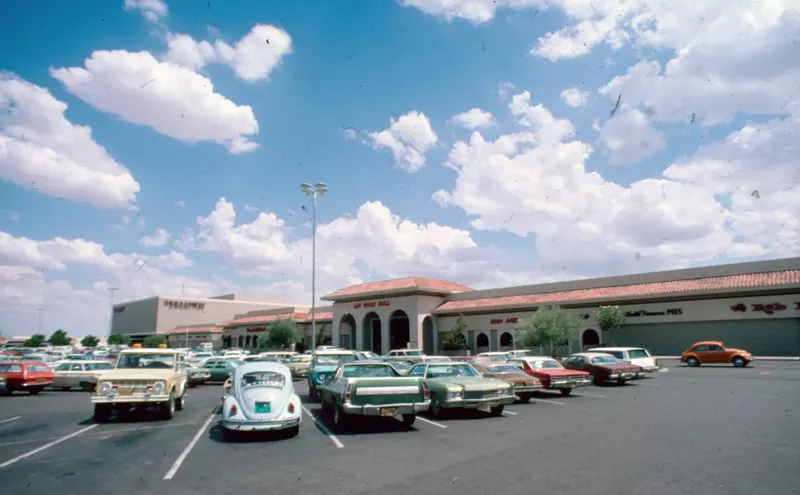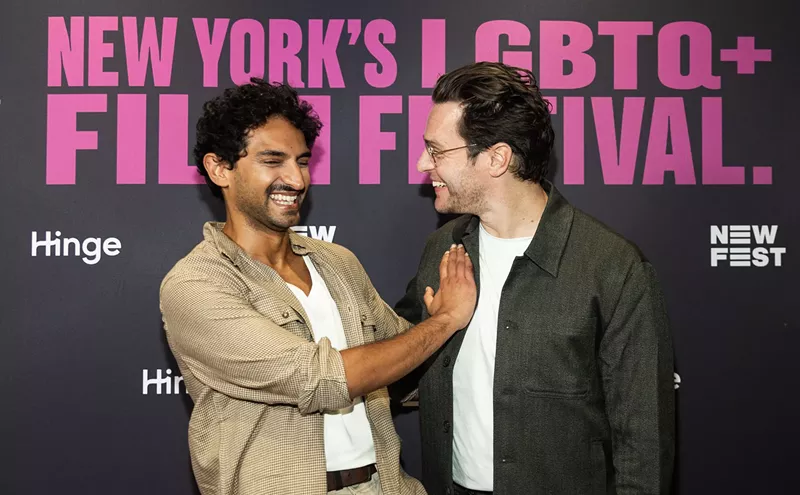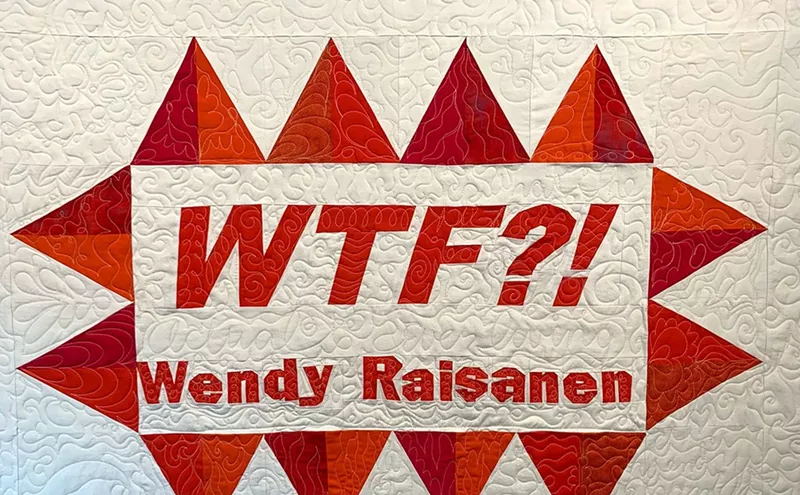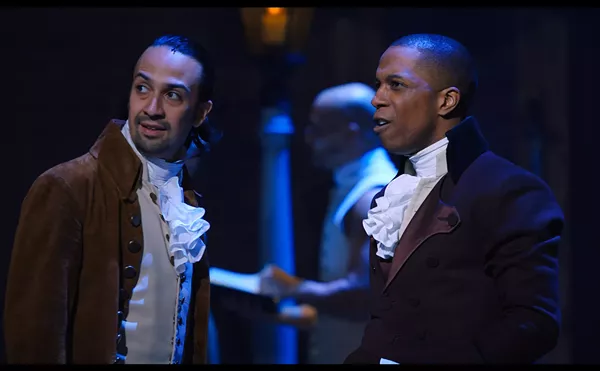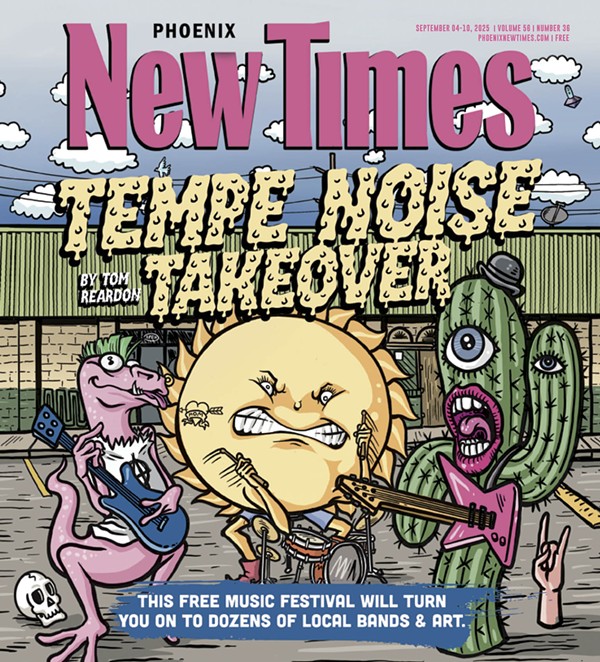It was that DIY spirit of Phoenix artists, as well as a small exhibit at the Los Angeles County Museum of Art, that motivated John Spiak, senior curatorial museum specialist at ASU Art Museum, to put together "Nooks and Crannies," an offbeat exhibition that utilizes unexpected places in the museum as gallery space for selected emerging Valley artists. So inspired, Spiak contacted local artists for his potential show and asked them to submit proposals for art they would create specifically for non-gallery spaces of their own choosing among the niches, pigeonholes and hallways ignored by most museumgoers.
"I saw a number of artists here who were doing the same underground things as those in L.A. were doing," says Spiak, referring to the use of hotel and motel rooms, old houses and garages, supermarkets, post offices, even a California Department of Motor Vehicles office and a freeway off-ramp for staging art exhibitions and performances. "I wanted to highlight the fact that there are amazing artists in town who are curating their own exhibitions and being active in the arts community, despite the fact that they don't have any gallery representation at all."
Since some of the work presented in "Nooks and Crannies" is fairly subtle, blending in with areas usually unassociated with displaying artwork, or very out of the way, you'll definitely need to arm yourself with the show's exhibition guide for pinpointing just where the art is lurking (who would think to look up at the ceiling or along window ledges?). Those black binders hanging on the front wall of the museum lobby, which I mistook for some sort of sculptural installation at the show's rather muted opening on September 14, are actually gallery guides that contain a treasure map illustrating where work is hiding.
No museum space has gone unmolested by the artists in "Nooks and Crannies." Even the museum's lower-level palaises de pissoir and one of the building's elevators have been commandeered for duty in the ardor for alternative art display areas. If you want to check out the installation in the opposite sex's bathroom, grab someone of their ilk and have him or her check to see whether anyone is using the facilities. If the coast is clear, first go into the men's restroom, where Ryan Breen has created a takeoff on an ingenious new Japanese audio innovation for public bathrooms, genteelly designed to cover up embarrassing bathroom sounds; his adaptation uses a highly edited translation of a tape made for young Japanese girls about American etiquette and female cultural mores in the U.S.
Visit the women's rest room next, where Tara Kozuback's Garnish, a video piece projected like roaming police searchlights on the white tile mosaic floor, lies in wait for the unprepared. Intrigued by a phone message about police helicopter searchlights left on her answering machine one night by an unidentified older woman, Kozuback put her imaginary video version of the incident together with the anonymous recorded message.
Ask the guard at the reception desk to show you Cyndi Coon's installation, Noted Instructions, made for the bag-check area, which is usually closed to the public. Better yet, check something in and you will get in return a plastic packet with an object and text inside describing the artist's fortuitous run-in with a stranger she's encountered (you're now officially a part of the interactive installation, by the way). In the museum's gift shop, you'll have to search among real merchandise to unearth Jeremy Briddell's Suburban Mistletoe, a not-for-sale wall installation across from the shop's real Christmas ornament display that makes a strong statement about consumer acquisitiveness. All this interacting will probably wear you out, so locate one of Angela Ellsworth's Wall Ticklers and rub against it. Clinging to walls next to the museum's print room and an elevator door, these vaguely obscene, pearl-studded "mini-massagers" purportedly can transmute mundane vertical surfaces into instruments of unmitigated bliss.
Not all of the show's offerings provide comic relief or witty ironic musings. Like everything else, "Nooks and Crannies" fell unwitting prey to fallout from September 11's tragic terrorist bombings. Jon Haddock's oversize action figures in a stairwell vignette re-creating one of the final scenes in The Godfather became instantly controversial the day after the attacks. The sculptural installation, for which no explanatory text had been put up at the time, depicts several figures lying in pools of resin-made blood, with a nearby gangster dressed as a police officer pointing a gun at another victim fleeing up the stairs.
"There was heavy reaction to [Haddock's work] the day after the bombings because we didn't have any information about it up," the show's curator says. "It caught me off guard. We took the piece out of the gallery for a bit so we could think about it. It made my stomach churn all day thinking about pulling Haddock's work."
The museum quickly came to the conclusion that "if we pulled it, we were censoring it, and the bombing was all about people opposed to our democratic way of life, including freedom of expression." The piece stayed in, Spiak reports. "And I grew as a curator that day."
Even more poignant is Ryan McNamara's Island Life. Co-owner of Phoenix's now defunct Barlow and Straker Gallery, McNamara had recently moved to New York to pursue a career as an artist. His proposed piece, an ongoing performance/installation work that would change every week, was to home in on McNamara's new experiences in the Big Apple as a replanted Arizona artist via objects accompanied by narrative text. His first installation, to be displayed in a Plexiglas vitrine, was to be about job hunting in New York City.
"The morning of the bombing, two hours after the first plane hit, Ryan sent me an e-mail, asking to withdraw his piece because he had just seen thousands of lives lost," Spiak relates. "His e-mail made the piece into something amazingly poetic about the U.S.' now-lost sense of isolation and immunity to attack from without. I asked for permission to post his e-mail as an explanation of why he was withdrawing from the show. He agreed, but asked that the vitrine that would have been used for displaying his work be left empty."
Though "Nooks and Crannies" arguably has done more for the Valley's artist community than any other exhibition within recent memory (word of ASU's impending show found its way to Larry Rinder, high-profile curator at New York's Whitney Museum of American Art, who detoured to Phoenix for studio visits with some of the exhibition's artists), the idea for this show ends up being more appealing to me than the actual art in it. That may be a function of artificially creating art to fit a pre-set theme or selected space, rather than finding a space to fit an existing work created because the artist was psychically compelled to create it. Or perhaps it's because the museum's concurrent show, "Cops and Robbers: Drawings by Lucio Muniain," with its cartoony but bone-chilling depictions of violence in Mexico City, so utterly overpowers it on any number of levels.
No matter. "Nooks and Crannies" is definitely worth the Easter egg hunt. And after the hunt, you begin to realize that, thankfully, someone in Arizona is not only thinking outside the box, but coloring outside the lines as well. "Nooks and Crannies"



